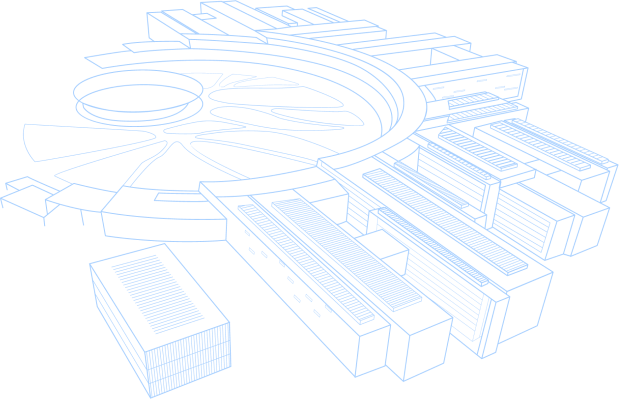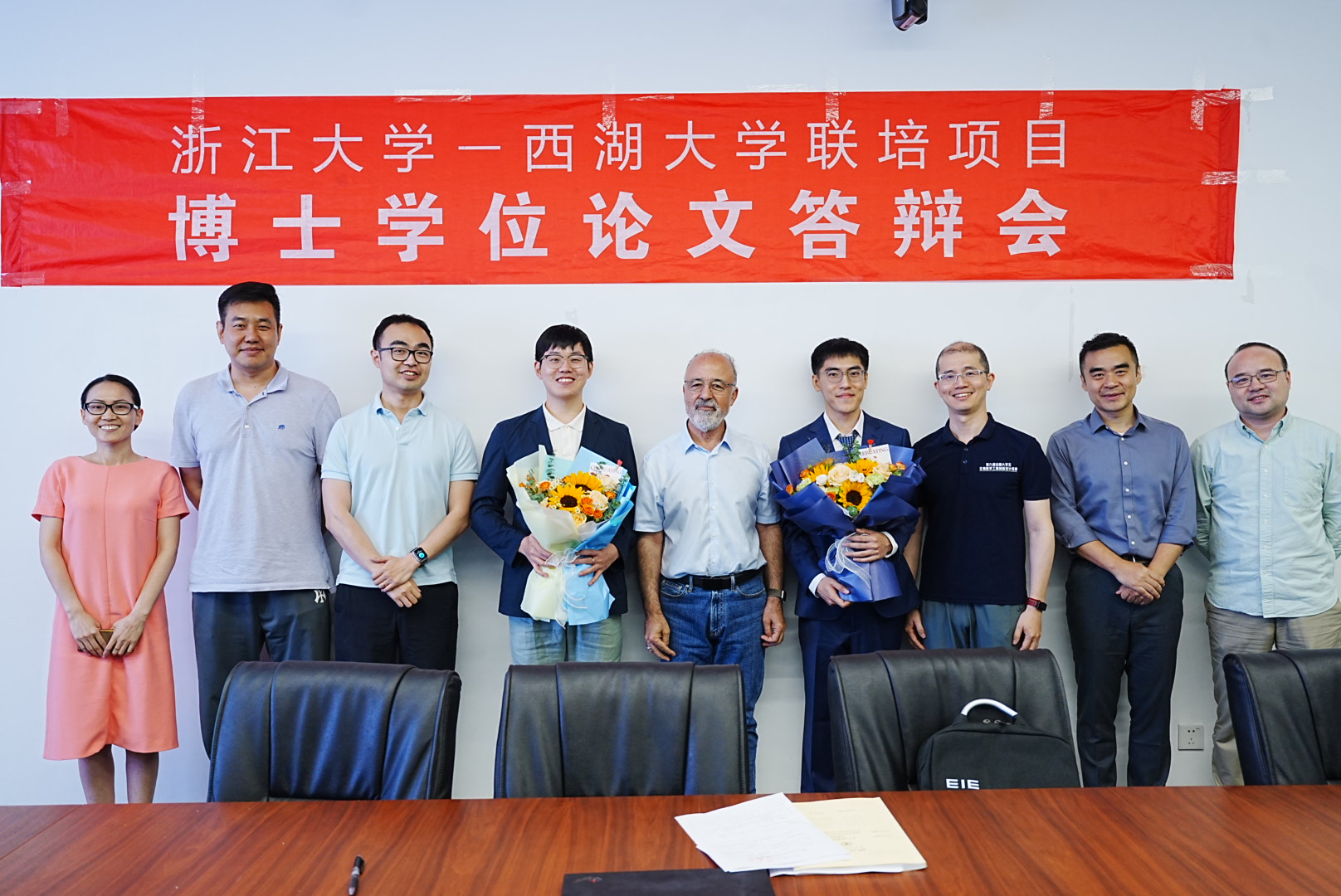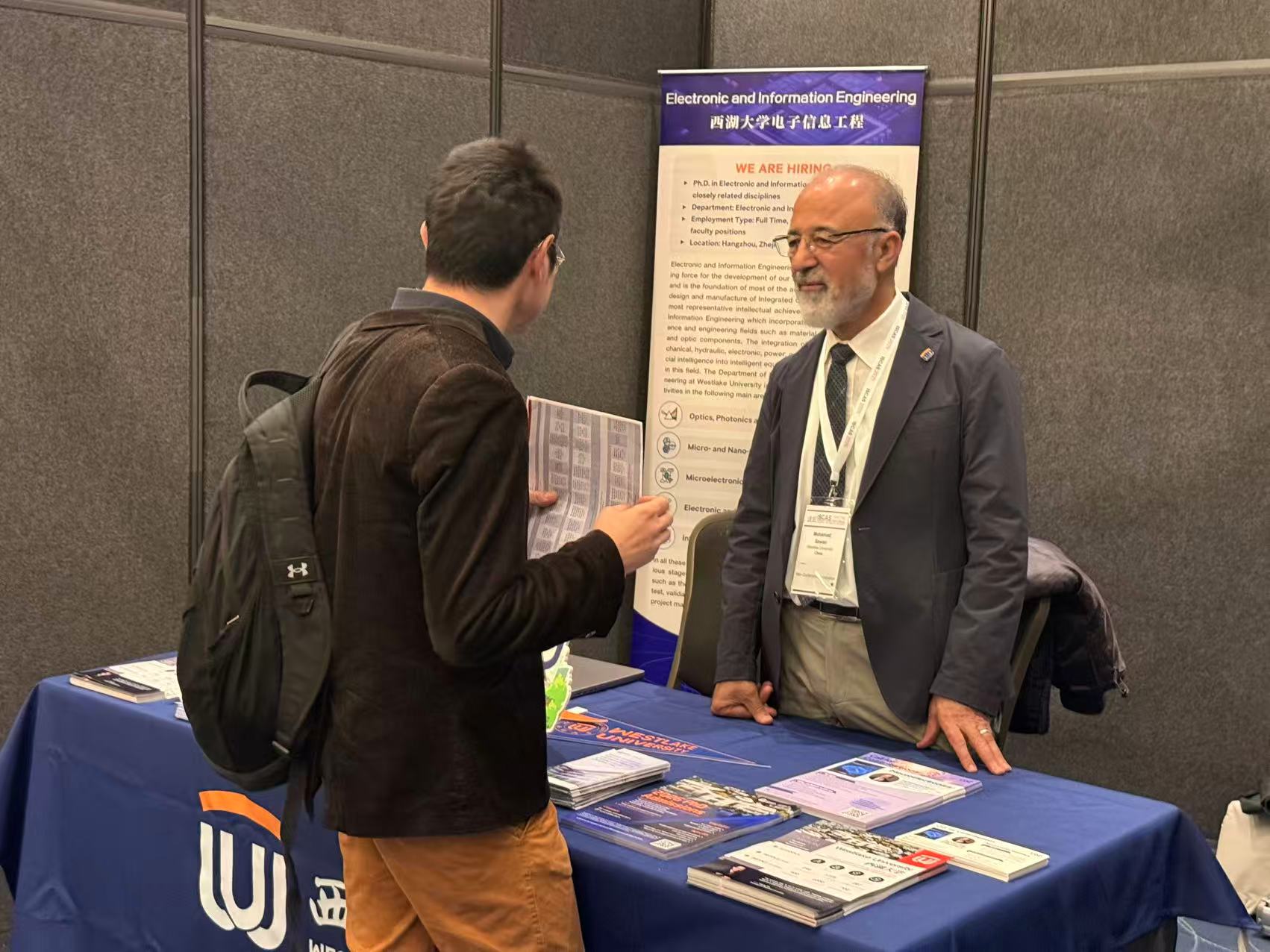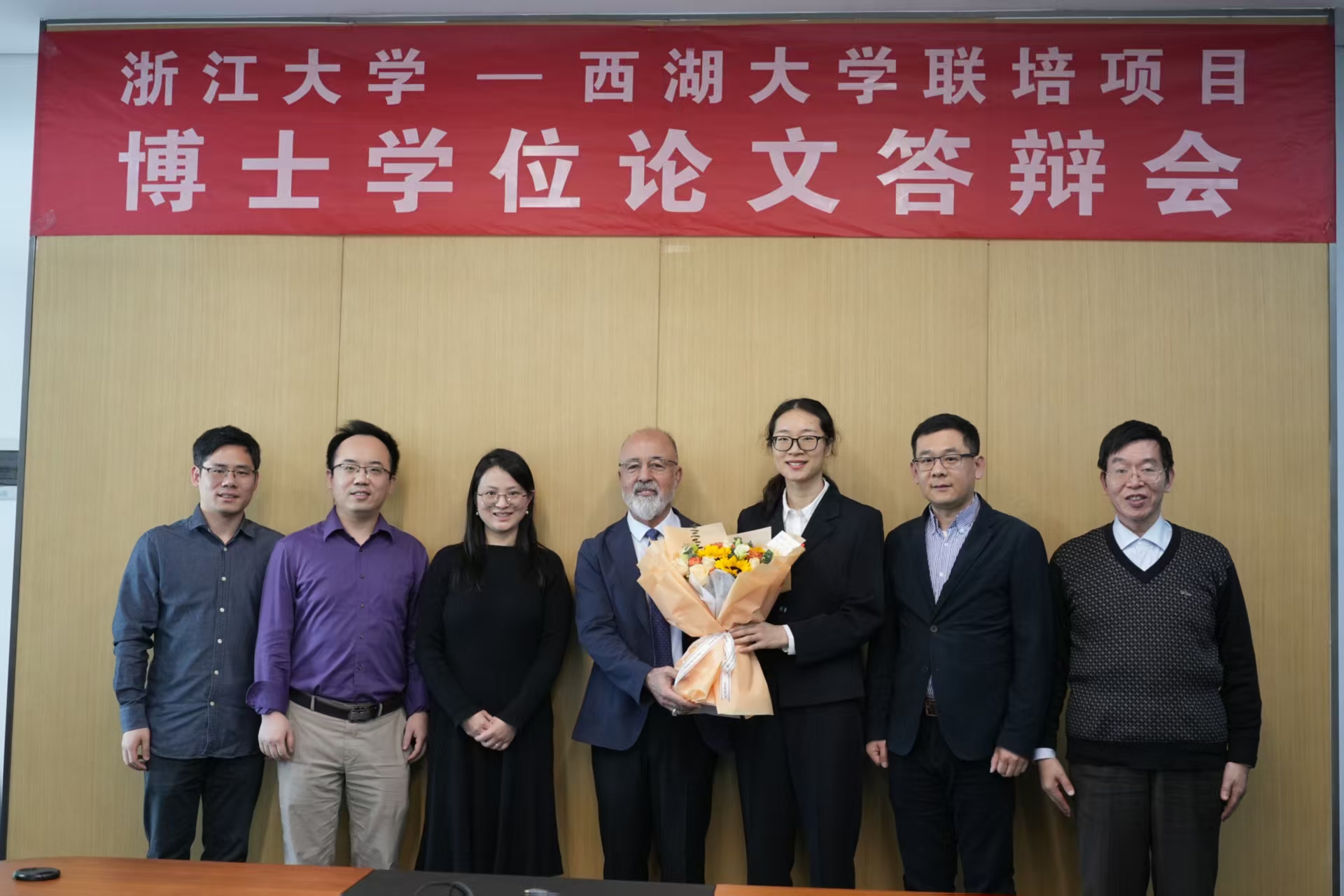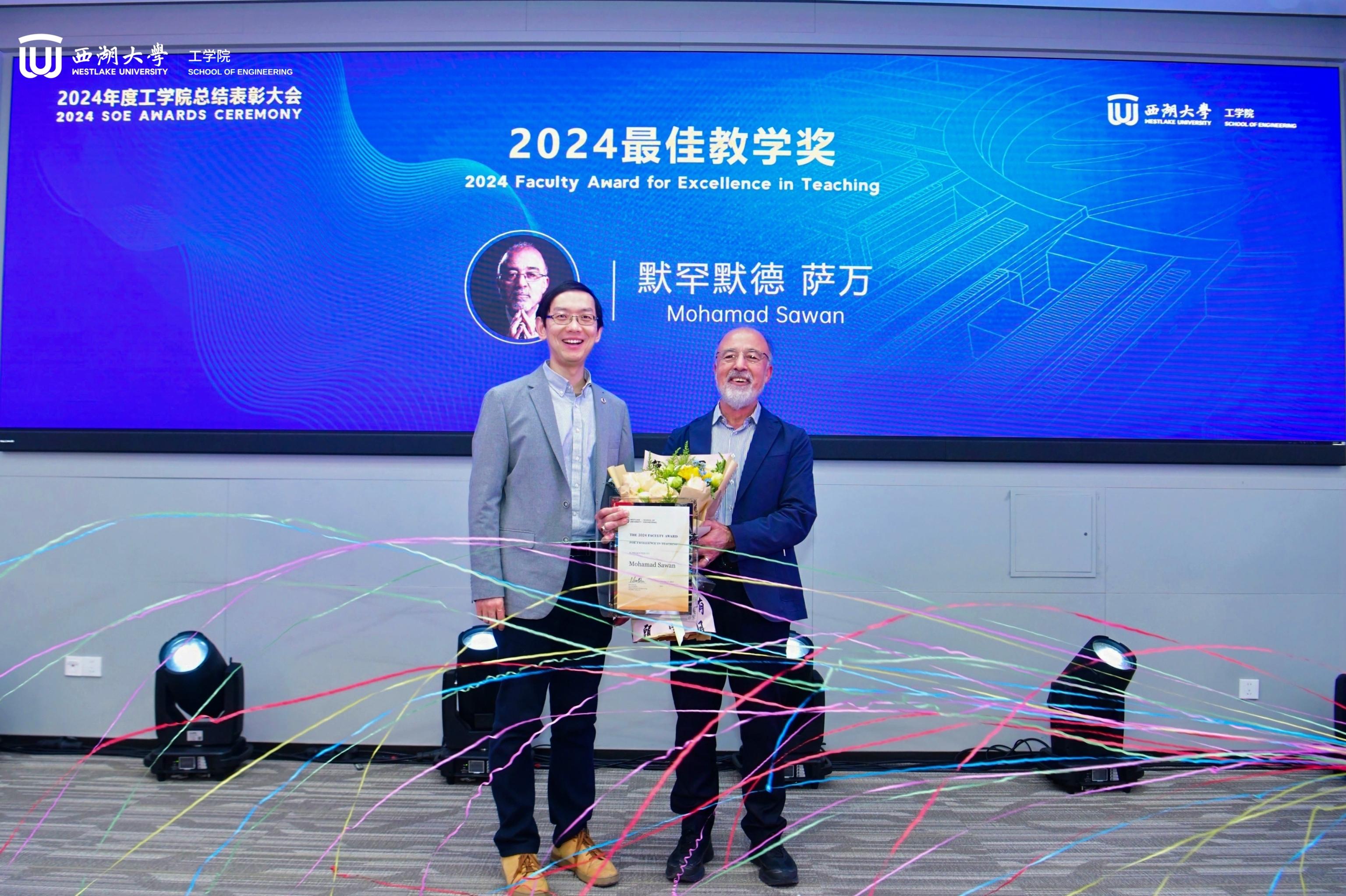Understanding how individual neurons connect in the human brain is a challenging task due to the complexity of the brain and limited microscopy technologies for in vivo studies. However, recent advancements in bioengineering and electrophysiology have provided more reproducible methods for studying neural networks in vitro, offering insights into their fundamental characteristics and mechanisms. In vitro neural network models enable researchers to examine the intricate processes of neural circuit formation and culturing neurons and observing their connectivity and activity under controlled conditions. These models shed light on circuit assembly, synaptic pruning, and the establishment of functional connections. Moreover, in vitro neural circuits provide a simplified and controlled environment for studying the fundamental principles of neural function. They offer insights into information processing, the generation of action potential patterns, and their contributions to specific brain functions. Recent research has shown that two-dimensional neural circuits with distinct segments.

A recent contribution from the CenBRAIN Neurotech, published in the Bio-Design and Manufacturing. In this paper, we present a novel strategy that utilizes magnetic nanoparticles (MNPs) and magnetic fields to manipulate neurons, thereby creating customized small-scale neural circuits for studying neural connections. The PhD student Hongyong Zhang from our center is the first author of this work, Dr. Mohamad Sawan and Dr. Sumin Bian are the corresponding author. This work was supported by Zhejiang Key Laboratory of 3D Micro/Nano Fabrication and Characterization.
Reference:
Hongyong Zhang, Lingrui Zhao, Nan Huang, Xiaobo Zhang, Tian Xu, Sumin Bian, Mohamad Sawan. Magnetic Nanoparticles for Single Neuron Manipulation to Design Customized Neural Circuit. Bio-Design and Manufacturing. (2025).
Highlights:
[1] Micromagnet array platform for magnetic nanoparticles (MNPs)-based single cells manipulation.
[2] Customized small-scale neural circuits formed by cultured neural cells and established inter-connections.
[3] Analysis and validation the change of viability, neuromorphology, and electrophysiology of cells due to MNPs.
[4] Investigation of factors impacting neural cells manipulation and finding the best conditions for safe manipulation.
Abstract:

Fig.1. Synthetic diagram of customized neural circuits using magnetic single cell manipulation: (A) The components of MMA system; (B) Process of building a specific-shaped neural circuit; (C) Principle of magnetic single cell manipulation; (D) Neural signals recording by a commercial recording system with a PCB adaptor.
To establish the feasibility of this approach, we initially investigated the effects of MNPs on neurons, demonstrating their low toxicity. Subsequently, we employed a micromagnet array (MMA) chip to manipulate neurons, facilitating their precise arrangement on electrodes. Over the course of several days, the neurons extended axons and established connections with neighboring cells, forming small-scale circular neural circuits. These artificially engineered circuits offer a simplified and controlled environment for studying neural networks in contrast to naturally occurring biological networks. Furthermore, we conducted electrophysiological recordings to investigate the connections between manipulated neurons. Our work has resulted in the introduction of a customized small-scale neural circuit platform, featuring electrode-specific recording and stimulating capabilities. This platform enables the study of neuron-to-neuron interactions at the single-cell level. By leveraging magnetic nanoparticles and a micromagnet array chip, our research offers a powerful tool for studying neural connections and advancing our understanding of the brain's intricate workings.
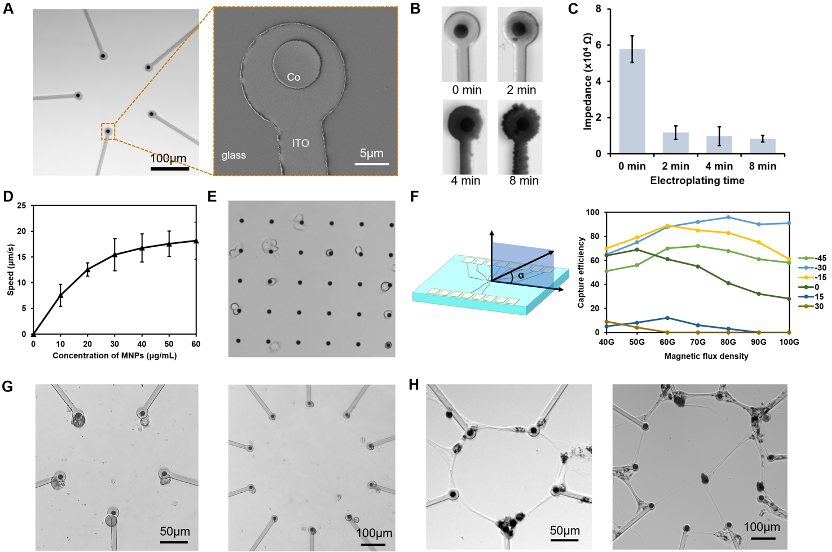
Fig. 2. MMA chip fabrication and single cell manipulation: (A) The design of MMA electrodes, which were observed by optical microscope (left) and SEM (right); (B) Electroplating of PEDOT: PSS on electrodes with different duration; (C) The decrease of electrode impedance after PEDOT: PSS coating with different electroplating time; (D) The speed of neuronal movement under 100G magnetic field, with different concentration of MNPs treatments; (E) Neural manipulation test on high-density MMAs for pre-experiment, to find the best parameter for cell manipulation; (F) Capture efficiency under different angel and amplitude of magnetic flux density; (G) Single cell manipulation on two different MMA; (H) Two different neural circuits establishment on MMA.
More information can be found at the following link:
https://insight.academax.com/BDM/doi/10.1631/bdm.2400372


